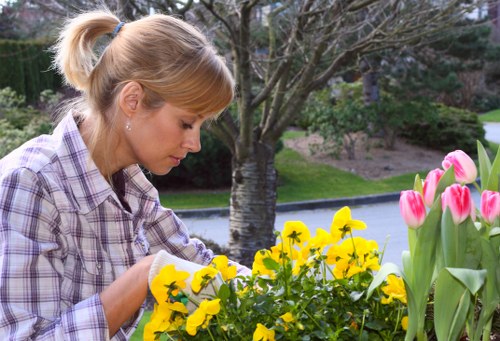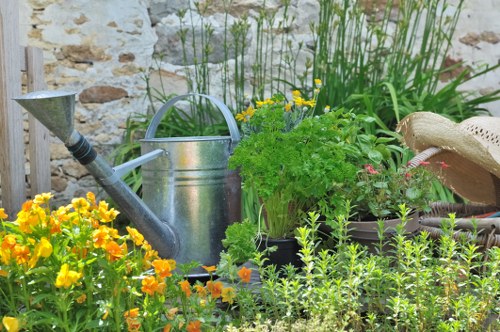Grass Cutting Leaves Green

Introduction to Grass Cutting
Maintaining a lush, green lawn is a common goal for many homeowners. Regular grass cutting not only enhances the appearance of your property but also promotes the health and vitality of your lawn. In Leaves Green, understanding the best practices for grass cutting can make a significant difference in achieving that perfect green space.
Grass cutting involves more than just keeping the blades short. It plays a crucial role in controlling weeds, promoting uniform growth, and improving the overall resilience of your lawn against pests and diseases. Whether you're a seasoned gardener or a beginner, mastering the art of grass cutting is essential for a beautiful landscape.
In this article, we'll explore the various aspects of grass cutting in Leaves Green, including the best times to mow, the right tools to use, and tips for maintaining a healthy lawn throughout the year.

Benefits of Regular Grass Cutting
Regular grass cutting offers numerous benefits beyond just aesthetics. Here are some key advantages:
- Enhanced Appearance: A well-mowed lawn looks neat and inviting, increasing the curb appeal of your home.
- Healthier Grass: Cutting the grass stimulates growth, leading to thicker and more vigorous turf.
- Weed Control: Regular mowing helps prevent weeds from establishing and spreading in your lawn.
- Improved Soil Quality: Trimming the grass helps in better nutrient distribution and soil aeration.
- Pest Prevention: Shorter grass height reduces hiding spots for pests, minimizing infestations.
By understanding and implementing regular grass cutting, you can enjoy a lush and resilient lawn all year round.
Additionally, regular mowing can help you keep an eye on the overall health of your grass, allowing you to address any issues promptly before they become significant problems.

Choosing the Right Grass Cutting Tools
Selecting the appropriate tools for grass cutting is crucial for achieving the best results. Here are some common tools used in Leaves Green:
- Push Mowers: Ideal for small to medium-sized lawns, push mowers are easy to maneuver and maintain.
- Riding Mowers: Suitable for larger lawns, riding mowers save time and effort, making the mowing process more efficient.
- String Trimmers: Perfect for trimming edges and areas that mowers can't reach, ensuring a clean and polished look.
- Lawn Aerators: These tools help in improving soil aeration, promoting healthier grass growth.
- Grass Clippers: Used for precise cutting and shaping of grass, especially in garden beds and landscaped areas.
Choosing the right tool depends on the size of your lawn, your budget, and your personal preferences. Investing in quality tools can make a significant difference in the ease and efficiency of your grass cutting routine.
It's also essential to maintain your grass cutting equipment regularly to ensure optimal performance and longevity.

Best Practices for Mowing Your Lawn
Adhering to best practices can enhance the effectiveness of your grass cutting efforts. Here are some tips to consider:
- Optimal Mowing Height: Adjust your mower to the recommended height for your grass type. Typically, shorter cuts are better for cool-season grasses, while taller cuts benefit warm-season varieties.
- Mowing Frequency: During peak growing seasons, mow your lawn once a week. In slower growth periods, reduce the frequency to avoid stressing the grass.
- Sharp Blades: Keep your mower blades sharp to ensure clean cuts, which minimize damage to the grass and prevent diseases.
- Dry Conditions: Mow your lawn when the grass is dry to prevent clumping and ensure an even cut.
- Varied Mowing Patterns: Change your mowing pattern regularly to prevent soil compaction and encourage upright growth.
Implementing these practices will help maintain a healthy and attractive lawn, making the grass cutting process more effective and enjoyable.
Additionally, proper mowing techniques can reduce the likelihood of common lawn problems, ensuring that your grass remains resilient and vibrant throughout the seasons.

Seasonal Grass Cutting Tips
Different seasons require different approaches to grass cutting to ensure year-round lawn health. Here's how to adjust your mowing practices throughout the year:
Spring
As the grass begins to grow after winter, start mowing regularly to encourage strong growth. Gradually increase the mowing height to help the lawn develop deeper roots.
Summer
During the hot months, maintain a higher mowing height to provide shade for the roots and reduce water evaporation. Water the lawn early in the morning to keep the grass hydrated.
Autumn
Begin to lower the mowing height as growth slows down. This prepares the lawn for the dormant winter period and helps prevent mold and mildew.
Winter
In colder climates, reduce mowing frequency as the grass growth slows. Keep the grass slightly longer to protect the roots from harsh weather conditions.
Adjusting your grass cutting routine according to the seasons ensures that your lawn remains healthy and vibrant throughout the year.
By understanding the seasonal needs of your grass, you can tailor your maintenance practices to support robust growth and resilience against environmental stresses.
Frequently Asked Questions
- Q1: How often should I mow my lawn in Leaves Green?
A1: Generally, during the growing season, mowing once a week is recommended. Adjust the frequency based on grass growth and seasonal changes. - Q2: What is the ideal grass cutting height for cool-season grasses?
A2: For cool-season grasses, a mowing height between 2.5 to 3.5 inches is ideal to promote healthy growth and resilience. - Q3: Should I water my lawn before or after mowing?
A3: It's best to water your lawn early in the morning before mowing. This ensures the grass is hydrated and reduces the risk of disease. - Q4: How can I prevent weed growth in my lawn?
A4: Regular mowing, proper watering, and fertilization help prevent weed growth. Additionally, using pre-emergent herbicides can control weeds effectively. - Q5: What maintenance does my mower require?
A5: Regularly sharpen mower blades, clean the mower deck, check and change the oil as needed, and ensure all parts are functioning properly to maintain optimal performance.

